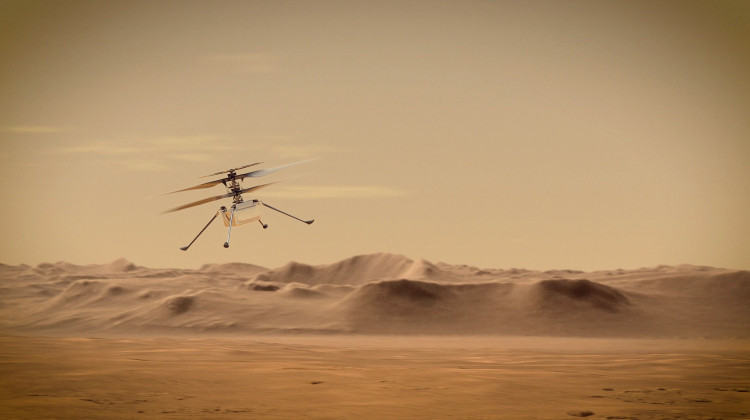China is exploring ways to improve its space exploration capabilities, including a vehicle that looks similar to NASA's Ingenuity helicopter.
The National Space Science Center (NSSC) of the Chinese Academy of Sciences (CAS) reported Wednesday that a prototype of a "Mars surface cruise drone" passed a final acceptance review on Aug. 20.
As SpaceNews writer Andrew Jones pointed out on Twitter, the image published by the science center depicts a miniature rotorcraft with two huge blades sitting on a table, which appears to be heavily inspired by Ingenuity.
The drone will be equipped with a spectrometer to presumably scan the Martian landscape's geographical features. Aside from that, the statement is devoid of specifics.
The rotorcraft was one of three projects in the NSSC's technology cultivation program. Bian Chunjiang of the NSSC spearheaded the vehicle project, which includes a micro spectrometer.
Although the concept could be considered for future Chinese Mars research, the NSSC has yet to identify a mission on which the drone could fly.
In February, China's first Mars mission, Tianwen-1, was launched into orbit around Mars. The successful landing of the roughly 240-kilogram, solar-powered Zhurong rover in May followed this achievement.
Its next Mars mission is currently scheduled to launch in the 2028 or 2030 launch windows, listed as a sample return mission.
China's ambition to fly an aircraft through the thin Martian atmosphere is not new. For China's 2020 Mars mission, a concept from the Qian Xuesen Laboratory of Space Technology was explored.
The ambitious proposal also featured three ground penetrators that would be discharged during descent and an aerostat that would operate for one week at an altitude of between 1 and 5 kilometers. With a single landing, the goal would have been to acquire "three-dimensional, multi-layer, and multi-source information."
NASA spent years perfecting the Ingenuity helicopter's design, painstakingly recreating the harsh environment and gravity of Mars on Earth.
The mission was a huge success, with the four-pound rotorcraft outperforming all expectations. Since its historic maiden flight in mid-April, the plane has flown a total of 12 times.
NASA is now looking for bigger, more capable rotorcraft ideas for future missions. The Dragonfly drone will be launched in 2027 and will arrive in 2034 on Titan, Saturn's largest moon. Dragonfly was selected as a New Frontiers planetary science mission.







